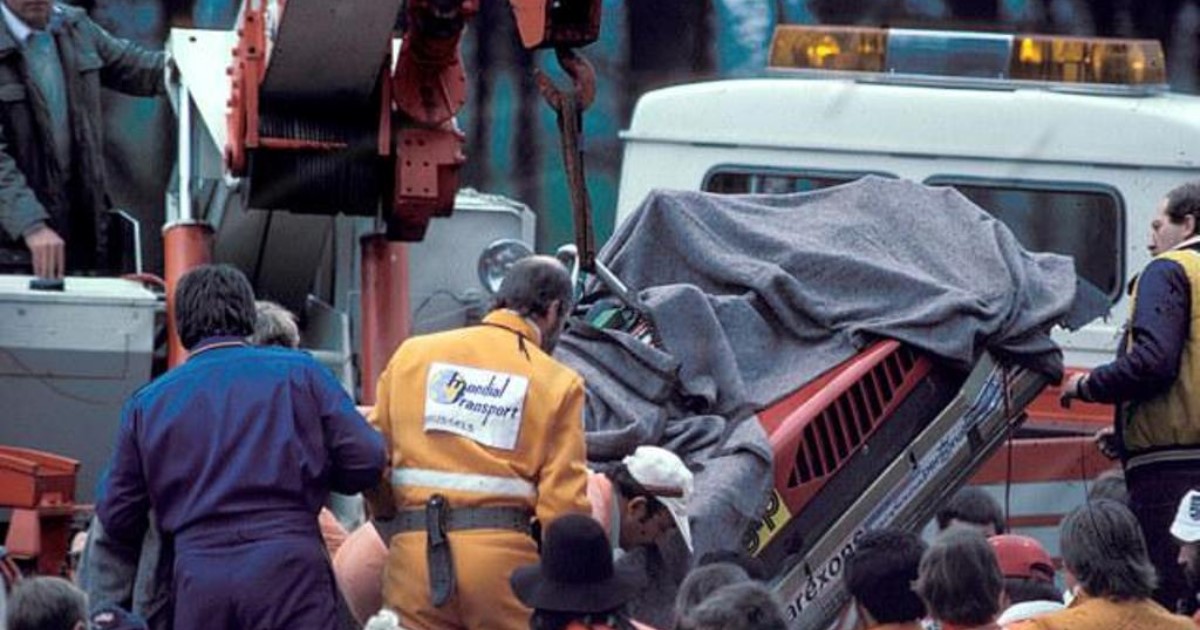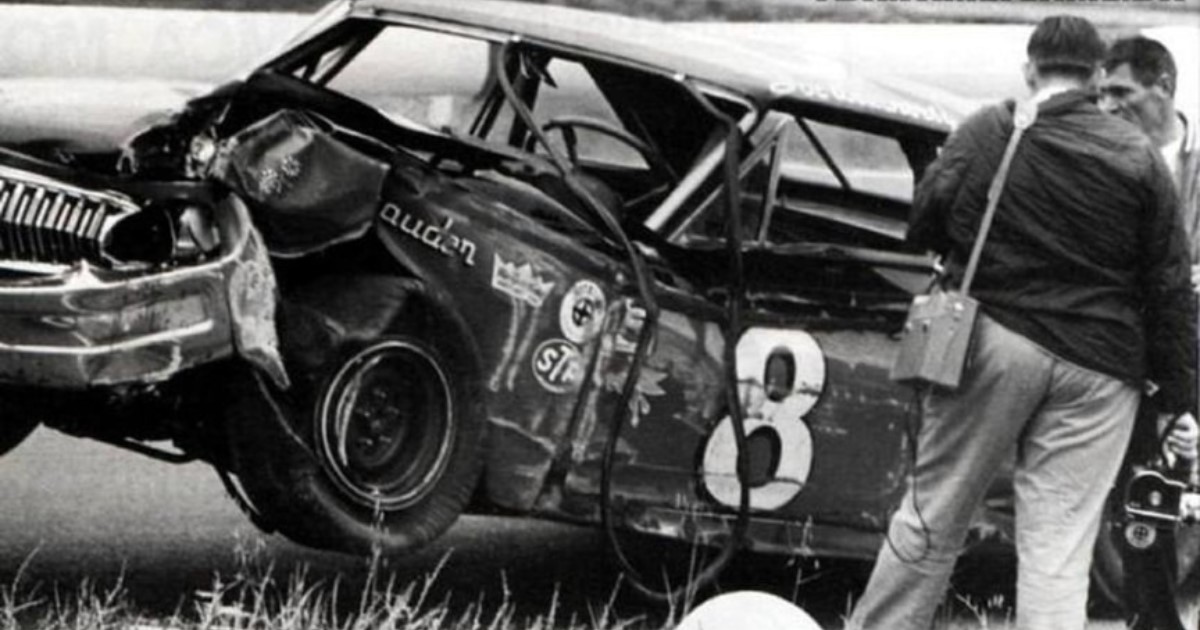The Most Horrific Crashes In All Of Motorsports History
There is no doubt whatsoever the sport of auto racing is risky and dangerous. Part of the attraction for spectators and drivers is the sense of thrill, danger, and adrenaline the high speeds and intense atmosphere provides. The drivers appear fearless as they reach top speeds and carve corners on the track, but when a driver loses control, tragic accidents are often inevitable. As much as they try to avoid crashes and roll-overs, the unexpected happens. Some of the worst accidents in motorsports history around the world are highlighted in the following slides.
10. South African Grand Prix

An ugly scene is what spectators, drivers, and personnel remember from the 1977 Grand Prix in South Africa. It started with Renzo Zorzi, whose vehicle went ablaze on his twenty-second lap of the race. He pulled over and as two attendants ran across the tarmac with extinguishers, one, Jansen van Vuuren, was struck by a racing vehicle driven by Tom Pryce. Both men died. Pryce’s instant death resulted from van Vuuren’s fire extinguisher hitting him on the head.
9. Belgian Grand Prix

A terrifying one-vehicle accident in 1982 claimed the life of Canadian racer, Gilles Villeneuve. As he whipped around a corner at top speeds during the Belgian Grand Prix, he could not slow down quick enough to avoid a slower vehicle in front of him, driven by Jochen Mass. He had to attempt to avoid it but was cut off and in a spectacular lift-off, spun in the air, causing the vehicle to shatter upon landing. Villeneuve lost his helmet and survived the accident strapped to his seat, but died hours later at the hospital.
8. Marlboro 500

To add insult to injury, one week before Canadian racer Greg Moore met his death on the track at the Marlboro 500 in 1999, he was involved in an accident with his motor-scooter that injured his hand. Regardless, he entered the CART World Series race at Auto Club Speedway in California. At about two hundred miles per hour, he lost control and whirled his car onto the grass in the inside of the track. The vehicle continued to plummet across an access road until it was stopped by a barrier. Moore died tragically at the age of twenty-four from head injuries.
7. Paris To Madrid Race

Before the advancement of modern vehicles, enhanced engines with super horsepower and tires for quality traction, racing took place in the early 1900s in vintage vehicles with very few safety measures. In 1903, the Paris to Madrid Race attracted three hundred drivers to the 1,300-kilometer course. The route was strewn with drivers who had to pull out of the race, vehicles damaged from hitting trees and other obstacles and a few that had caught on fire. There were multiple injuries and eight deaths. Even the spectators were inexperienced, as many attempted to run out on the road, causing further crashes and misfortune.
6. Italian Grand Prix

A false start at the 1978 Italian Grand Prix was the cause of a tragic accident and death of a Swedish driver. Cars from the fourth row on got a jump start and the resulting collision involved nine vehicles in a pile-up. Peterson was assessed after being freed from his flaming car and had serious leg injuries, but looked in better condition than his fellow competitor, Vittoria Brambilla, who required the immediate attention of medical staff. At the hospital, Peterson suffered an embolism which caused his death the following morning.
5. Daytona 500

Dale Earnhardt Sr. lost his life doing what he loved on February 18, 2001. This first race of the Daytona 500 series was held in Daytona Beach, Florida and on the final lap, he was involved in a three-car accident. After losing control from being hit from behind by Sterling Martin, Earnhardt and Ken Schrader met in a collision, causing Earnhardt’s speeding vehicle to hit a wall. It hit hard enough to cause Earnhardt to succumb to a fracture of the skull. That same race was also the scene of another accident involving eighteen vehicles.
4. Japan’s Super GT

Besides the usual risks of speed, racers at the 1998 Super GT at Fuji Speedway were subjected to the additional challenge of unrelenting rain and fog. Under such conditions, the safety car should not have been driving the parade lap as fast as it was, and when it slowed suddenly, caused drivers behind it to aquaplane and crash. Ota came barreling down the track but slowed before hitting a Porsche, driven by Tomohiko Sunako and both vehicles burst into flames. Ota was trapped and burned significantly. As a result, his career ended.
3. German GP

The 1976 German GP became a household name after the film, Rush, hit the big screen in 2013. The movie told the story of rivals James Hunt and Niki Lauda, two accomplished Formula 1 drivers. They raced in the German GP under challenging conditions at the Nurburgring Nordschleife. The track was wet and when Lauda carved a turn in his Ferrari, he lost control and hit a wall. He became trapped in his car which was quickly being consumed by fire. The quick response of other drivers saved his life as they pulled him out and he was left to recover with scars and burns.
2. Old Bridge Township Raceway Park

In 2008, Scott Kalitta was driving his dragster at speeds topping 125 miles per hour in hopes of qualifying for the Lucas Oil NHRA SuperNationals. His aspirations did not come to be. Instead, during the race at Old Bridge Township Raceway Park in New Jersey, his car’s engine exploded, and his parachute failed to deploy. He continued to speed out of control over the side wall while his car was ablaze. He was killed upon impact of hitting a crane. Prior to his death, Kalitta won two championship titles in 1994 and 1995.
1. Riverside International Raceway

Joe Weatherly will forever be remembered for his final race in 1964. It was at California’s Riverside International Raceway and he was competing in the fifth race of the season. When he lost control of his car, this two-time Grand National Series champion hit a wall and his head was crushed outside the window. Had safety precautions been taken, including a harness and window net, Weatherly may have survived the crash. As a result, rules were implemented to require all NASCAR vehicles to be equipped with window screens.







